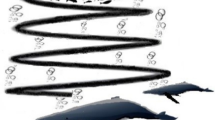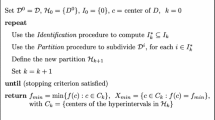Abstract
Rankine source method, optimization technology, parametric modeling technology, and improved multiobjective optimization algorithm were combined to investigate the multiobjective optimization design of hull form. A multiobjective and multilevel optimization design framework was constructed for the comprehensive navigation performance of ships. CAESES software was utilized as the optimization platform, and nondominated sorting genetic algorithm II (NSGA-II) was used to conduct multiobjective optimization research on the resistance and sea-kee** performance of the ITTC Ship A-2 fishing vessel. Optimization objectives of this study are heave/pitch response amplitude and wave-making resistance. Taking the displacement and the length between perpendiculars as constraints, we optimized the profile of the hull. Analytic hierarchy process (AHP) and technique for order preference by similarity to ideal solution (TOPSIS) were used to sort and select Pareto solutions and determine weight coefficient of each navigation performance objective in the general objective. Finally, the hydrodynamic performance before and after the parametric deformation of the hull was compared. The results show that both the wave-making resistance and heave/pitch amplitude of the optimized hull form are reduced, and the satisfactory optimal hull form is obtained. The results of this study have a certain reference value for the initial stage of multiobjective optimization design of hull form.
Similar content being viewed by others
References
PERI D, CAMPANA E F. Multidisciplinary design optimization of a naval surface combatant [J]. Journal of Ship Research, 2003, 47(1): 1–12.
PERI D, CAMPANA E F. High-fidelity models and multiobjective global optimization algorithms in simulation-based design [J]. Journal of Ship Research, 2005, 49(3): 159–175.
CAMPANA E F, LIUZZI G, LUCIDI S, et al. New global optimization methods for ship design problems [J]. Optimization and Engineering, 2009, 10(4): 533–555.
PINTO A, PERI D, CAMPANA E F. Multiobjective optimization of a containership using deterministic particle swarm optimization [J]. Journal of Ship Research, 2007, 51(3): 217–228.
TAHARA Y, TOHYAMA S, KATSUI T. CFD-based multi-objective optimization method for ship design [J]. International Journal for Numerical Methods in Fluids, 2006, 52(5): 499–527.
BOULOUGOURIS E K, PAPANIKOLAOU A D. Multi-objective optimisation of a floating LNG terminal [J]. Ocean Engineering, 2008, 35(8/9): 787–811.
KIM H, YANG C, LÖHNER R, et al. A practical hydrodynamic optimization tool for the design of a monohull ship [C]//8th International Offshore and Polar Engineering Conference. Vancouver: ISOPE, 2008: 98–107.
KIM H. Multi-objective optimization for ship hull form design[D]. Fairfax, Virginia: George Mason University, 2009.
KIM H, YANG C, JEONG S, et al. Hull form design exploration based on response surface method [C]//21st International Offshore and Polar Engineering Conference. Maui, Hawaii: ISOPE, 2011: 816–825.
DIEZ M, CAMPANA E F, STERN F. Stochastic optimization methods for ship resistance and operational efficiency via CFD [J]. Structural and Multidisciplinary Optimization, 2018, 57(2): 735–758.
WEI F Y, LI S Q. Hybrid genetic algorithm based multiobjective dynamic optimization [J]. Journal of Astronautics, 2004, 25(6): 609–615 (in Chinese).
ZHOU Y L, YANG S L, WEI X, et al. Study on synthetical optimization of performance of ship dynamics based on GA-chaos [J]. Ship Science and Technology, 2005, 27(4): 18–21 (in Chinese).
ZHANG B J. Optimized lines of the full hull using the resistance in still water and added resistance in waves [J]. Journal of Huazhong University of Science and Technology (Nature Science Edition), 2011, 39(10): 32–35 (in Chinese).
WANG G C, MA N, GU X C. Research on the energy efficiency design index optimization of ultra large container ship [J]. Ship Science and Technology, 2017, 39(9): 60–64 (in Chinese).
CHENG X D, FENG B W, CHANG H C, et al. Multiobjective optimisation of ship resistance performance based on CFD [J]. Journal of Marine Science and Technology, 2019, 24(1): 152–165.
ZHAO R J, XIE X L, WEI Z K. Comparative research on multiple-objective optimization and single-objective optimization to semi-submersible repair vessels [J]. Ship Building of China, 2018, 59(2): 205–212 (in Chinese).
ZHANG J F, YANG T N, MA W H. Ship speed optimization based on multi-objective particle swarm algorithm [J]. Journal of System Simulation, 2019, 31(4): 787–794 (in Chinese).
WANG X Q, WANG X J. Algorithm of multidiscipline optimization design [J]. Missiles and Space Vehicles, 2007(1): 23–26 (in Chinese).
ZHANG B J, MA K, JI Z S. The optimization of the hull form with the minimum wave making resistance based on Rankine source method [J]. Journal of Hydrodynamics, 2009, 21(2): 277–284.
HUANG X L, LU X S. Marine engineering fluid mechanics and structural dynamic response [M]. Shanghai: Shanghai Jiao Tong University Press, 1992 (in Chinese).
YU Y L, GAO W C, LIU W, et al. Simplified perturbation method for analyzing the mode jum** of close mode structure [J]. Engineering Mechanics, 2012, 29(3): 33–40(in Chinese).
SKJELBREIA L, HENDRICKSON J. Fifth order gravity wave theory[J]. Coastal Engineering Proceedings, 1960, 1(7): 184–196.
XU J Q. A survey of multiobjective optimization algorithms [J]. Science & Technology Information, 2010 (32): 115–116 (in Chinese).
HOLLAND J H. Adaptation in natural and artificial systems [M]. Cambridge, Massachusets: MIT Press, 1992.
SRINIVAS M, PATNAIK L M. Adaptive probabilities of crossover and mutation in genetic algorithms [J]. IEEE Transactions on Systems, Man, and Cybernetics, 1994, 24(4): 656–667.
DEB K, AGRAWAL S, PRATAP A, et al. A fast elitist non-dominated sorting genetic algorithm for multiobjective optimization: NSGA-II [M]//Parallel problem solving from nature PPSN VI. Berlin, Heidelberg: Springer, 2000: 849–858.
CHEN J P, XU J, GONG Y, et al. Research on the analytic hierarchy process model of ship optimization based on variable value method [J]. Ship Science and Technology, 2016, 38(9): 69–73, 78 (in Chinese).
LI X P. A study of scaling method to obtain index weight by analytic hierarchy process [J]. Journal of Bei**g University of Posts Telecommunications, 2001, 3(1): 25–27(in Chinese).
ZHOU Z H, SHA S, RAO W T. Comprehensive evaluation method and application of LTE network structure based on ideal solution [J]. Wireless Internet Technology, 2017(20): 39–40 (in Chinese).
Author information
Authors and Affiliations
Corresponding author
Additional information
Foundation item: the National Natural Science Foundation of China (Nos. 51779135 and 51009087), and the Natural Science Foundation of Shanghai (No. 14ZR1419500)
Rights and permissions
About this article
Cite this article
Liu, J., Zhang, B. Multiobjective Optimization of Hull Form Based on Global Optimization Algorithm. J. Shanghai Jiaotong Univ. (Sci.) 27, 346–355 (2022). https://doi.org/10.1007/s12204-022-2445-2
Received:
Accepted:
Published:
Issue Date:
DOI: https://doi.org/10.1007/s12204-022-2445-2
Key words
- multiobjective optimization
- Rankine source method
- global optimization algorithm
- nondominated
- sorting genetic algorithm II (NSGA-II)




